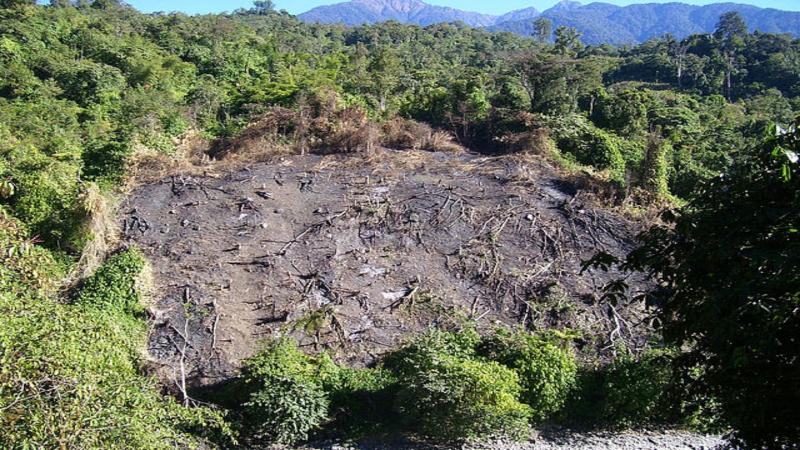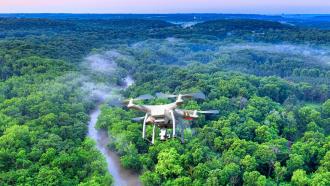
Pic credit Prashanthns via Wikimedia commons
Jhum cultivation is a shifting type of agricultural practice followed in the northeastern parts of India. In this practice, farmers burn a patch of forest area for cultivation, sow and harvest their crops. After a few years, when the soil fertility declines, they abandon the patch and shift to another patch for cultivation. The abandoned lands called fallow lands are left for forest trees to regrow naturally in a few years. Researchers have found that although land burning enriches the soil, the shifting cultivation practice has resulted in deforestation and forest degradation.
A recent study by researchers at the Mizoram University, Aizawl, and the North-Eastern Space Applications Centre, Meghalaya, have assessed the forest recovery following shifting cultivation in the fallow lands of Manipur. The study, published in the journal PLoS ONE, contributes to climate mitigation policies that focus on tree conservation and carbon storage of forests. The researchers say that although clearing forests for shifting cultivation affects biodiversity, planting trees in the fallow lands can reduce the harmful effects by boosting forest tree growth and improving the forest’s carbon storage.
Manipur is located in the biodiversity hotspot of the country, with nearly 77.2% of the state’s geographical area covered by forests and trees and 70% of the population depend on agriculture for livelihood.
The researchers studied areas in the Ukhrul and Chandel districts of Manipur. Chandel had a higher fallow land area than Ukhrul, with the patches cleared five, ten and twenty years ago for cultivation. In their present condition, they found tree regrowth in the fallow patches. The researchers evaluated the composition, diversity and abundance of tree species following regrowth in these regions. In addition, they also measured the carbon stored by such trees. Carbon is a byproduct of photosynthesis stored as organic biomass in tree trunks, roots and branches and accumulates over time; eventually, it is recycled into the atmosphere to maintain the carbon cycle. It is an essential attribute of stable forest ecosystems.
A total of 58 tree species were recorded in Ukhrul’s fallow lands; of them, Chinese sumac (Ailanthus altissima), Benguet pine (Pinus kesiya), and Needlewood tree (Schima wallichii) were predominant. There was a 42.9% rise in the number of tree species in the 5–10 year fallow period, which further rose by another 3.3% in the 15-year fallow period and remained stable up to 20 years. 61.9% of tree species recovery was observed in Ukhrul between 5- and 20-year fallow period.
In Chandel, 59 tree species were recorded. The gland bearing oak (Quercus serrata) were found primarily on patches left fallow for 5–10 years; needlewood and chinquapin (Castanopsis hystrix) trees dominated those that were uncultivated for 15–20 years. The number of tree species increased by 4% from 5-10 years, with a further rise by 11.5% in 15 years and 6.9% in 20 years. 34.78% of tree species recovery was observed in Chandel between 5- and 20-year fallow period.
The team also found that the number of different tree species (species richness) and tree stem density in the north-facing lower elevation fallow lands are greater than those in higher elevations. Therefore, Chandel, situated at a lower level, was more species-rich and had a higher density of tree stems than sites in Ukhrul; However, the forests recovered faster in Ukhrul.
The carbon stored in the trees also increased over the years in the fallow lands. For example, in Ukhrul, the shrub Antidesma acidum was found to store more carbon in lands that were uncultivated for five years. In Chandel, Indian mahogany, Khasi pine, Quercus serrata, and Murray stored significant amounts of carbon.
The team compared the carbon storage of undisturbed forests and the oldest fallow site in the region. They found that the 20-year fallow site stores only around 40% of the carbon stored in the undisturbed forests. They predict that it would take approximately 39–41 years for the regrowing trees to reach the carbon storage stage of an undisturbed forest.
In order to boost carbon storage, the researchers recommend tree planting to assist in forest regrowth in the fallow lands. They posit that planting Indian olive and chinquapin – which are endemic to the region – could speed up tree regeneration. Besides, the saplings were locally available and could be collected from the surrounding forests for planting. They also opine that tree planting could help soil nutrient recovery and reduce the burning of primary forests for cultivation.
Editor's note: This article has been updated to reflect correct spellings.






